Participants
MicroObservatory On-line Workshop 1997
Mary Albert
albertm497@aol.com
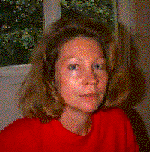 I teach a 5-6 combo class at Kasuun Elementary in Anchorage, AK.
I have a BA in Communications from University of Washington, a
BED from University of Alaska Anchorage, a Masters in Economic
Ed from University of Delaware. I have two sons, one in the
US Navy, the other a Senior at West High here in Anchorage.
My husband and I have lived in Alaska for 23 years.
My passions are science, math, technology, my family, Alaska
and mountain biking. Every year my class participates in an
Astronomy simulation game, creates a mini-society, and we play
the Stock Market Game. This year we were the first class (Ibelieve)
in Alaska to play over the net. We joined U. of Hawaii.
It was awesome! I am hoping to use the workshop to further
integrate astronmy into my class projects.
I teach a 5-6 combo class at Kasuun Elementary in Anchorage, AK.
I have a BA in Communications from University of Washington, a
BED from University of Alaska Anchorage, a Masters in Economic
Ed from University of Delaware. I have two sons, one in the
US Navy, the other a Senior at West High here in Anchorage.
My husband and I have lived in Alaska for 23 years.
My passions are science, math, technology, my family, Alaska
and mountain biking. Every year my class participates in an
Astronomy simulation game, creates a mini-society, and we play
the Stock Market Game. This year we were the first class (Ibelieve)
in Alaska to play over the net. We joined U. of Hawaii.
It was awesome! I am hoping to use the workshop to further
integrate astronmy into my class projects.
Joe Catanzarite
jcatanz1@aol.com
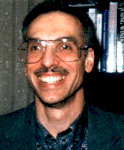 I teach Astronomy and Astronomy Lab and Physics at Cypress
College. My particular interest in the project is to
find ways to involve my students in Astronomy research projects.
I teach Astronomy and Astronomy Lab and Physics at Cypress
College. My particular interest in the project is to
find ways to involve my students in Astronomy research projects.
John Everhart
everhartj@aol.com
Born in Welcome, NC (1952).
Graduated from North davidson High (where I now teach).
BS in General Science from High Point University.
MAEd from Wake Forest University.
Have taught at North Davidson for 20 years.
Richard Galletti
zubby@aol.com
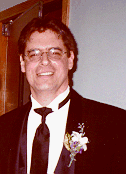 I am a physics/astronomy teacher in a suburban New York
(Long Island) school district. I have been teaching for
5 years (4 yrs. Earth Science, 3 yrs. physics, and a new Astronomy
elective for one year.) My interests include cosmology, astrophysics,
quantum mechanics, space exploration, motorcycles, entropy,
sports and the beach.
My particular MicroObservatory interests include use of remote
telescopes in my new (second year) astronomy elective. I would
like for my students to access images of their choosing and related
data in completion of a course project. For myself, I will
particularly enjoy "doing" astronomy and learning what I can
from real astronomers.
Not to mention the big kick I'll get from using the telescopes.
I am a physics/astronomy teacher in a suburban New York
(Long Island) school district. I have been teaching for
5 years (4 yrs. Earth Science, 3 yrs. physics, and a new Astronomy
elective for one year.) My interests include cosmology, astrophysics,
quantum mechanics, space exploration, motorcycles, entropy,
sports and the beach.
My particular MicroObservatory interests include use of remote
telescopes in my new (second year) astronomy elective. I would
like for my students to access images of their choosing and related
data in completion of a course project. For myself, I will
particularly enjoy "doing" astronomy and learning what I can
from real astronomers.
Not to mention the big kick I'll get from using the telescopes.
Bob Hillenbrand
no1star@aol.com
I have taught grade school and high school science for about
20 years total. Classes have included full year astroomy classes,
space technology and engineering, biological sciences, and physics.
I was also a planetarium director for nearly 14 years and have
a background in the space program as a writer, photographer,
and most recently with NASA as Project Educator for the SOFIA
Project, X-34, and have worked on Mars pathfinder, Lunar
prospector, and the Kepler Project as an outreach person.
I did the "Night of the Comet" internet site for Comet Hyakutake,
and have also designed several others. I am a great believer in
the potentials of the net for projects like this and look forward
to seeing how we can develop this to continue the great interest
in astronomy by allowing students to do some REAL astronomy.
Tom Hocking
thocking@aol.com
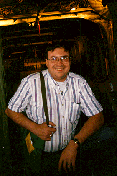 Tom Hocking is a longtime planetarium professional with
19 years teaching experience in formal and informal settings.
Well-known as the Education Coordinator at UNC-Chapel Hill's
Morehead Planetarium for 10 years, Tom has moved to
Indianapolis where he taught elementary school during the
1996-97 school year at an inner-city private school (which
dumped all the current faculty at the end of the school year, so
have resume will travel!).
Tom manages the website for the International Planetarium Society,
among other computer pursuits. Tom also runs an internet-mail astronomy
question/answer service "Dear Starman" at starman@unc.edu.
Tom is no stranger to CfA workshops, having been a Project
SPICA agent and a participant in the first MicroObservatory
workshop as a telescope interface beta-tester. Tom will be
"moonlighting" during the first week of the workshop at the
Childrens Museum of Indianapolis, where he will be faculty at
an astronomy Day Camp at the SpaceQuest Planetarium, where
he will probably demo the MicroObservatory Project for the
kids attending.
Tom is a big-picture astronomer and likes to use the MO
telescopes for demonstrating moon phases even when it's
cloudy, as well as to get pics of planets being studied/explored
by NASA missions to illustrate the advantages to visiting a
planet in addition to studying it with a telescope.
Tom Hocking is a longtime planetarium professional with
19 years teaching experience in formal and informal settings.
Well-known as the Education Coordinator at UNC-Chapel Hill's
Morehead Planetarium for 10 years, Tom has moved to
Indianapolis where he taught elementary school during the
1996-97 school year at an inner-city private school (which
dumped all the current faculty at the end of the school year, so
have resume will travel!).
Tom manages the website for the International Planetarium Society,
among other computer pursuits. Tom also runs an internet-mail astronomy
question/answer service "Dear Starman" at starman@unc.edu.
Tom is no stranger to CfA workshops, having been a Project
SPICA agent and a participant in the first MicroObservatory
workshop as a telescope interface beta-tester. Tom will be
"moonlighting" during the first week of the workshop at the
Childrens Museum of Indianapolis, where he will be faculty at
an astronomy Day Camp at the SpaceQuest Planetarium, where
he will probably demo the MicroObservatory Project for the
kids attending.
Tom is a big-picture astronomer and likes to use the MO
telescopes for demonstrating moon phases even when it's
cloudy, as well as to get pics of planets being studied/explored
by NASA missions to illustrate the advantages to visiting a
planet in addition to studying it with a telescope.
Richard H. Maki
rmaki@aol.com
Richard Maki teaches earth science and environmental science
at The Bromfield School in Harvard, MA, with more than 30
years of experience in instructing the earth sciences. Most recent
on-line involvement was with American Meteorological Society
project DataStreme "course" in which we used satellite and
man-made images to investigate weather phenomena being
presented in a text and accompanying workbook. Weekly
assignments were faxed to a teacher leader, corrected and
comments telephoned to each participant. Great program!
Presently working with TERC and Princeton University to
refine equipment and software related to earthquake studies.
Past involvement at Harvard University included three years
with Project Image helping to write and field test student
activities using remotely sensed imagery. Prior work included
a couple years, also at Harvard, with Project ESTEEM, again,
developing and testing activities related to teaching the
earth sciences.
Sheila McGrath
shem2g@aol.com
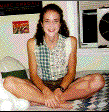 I have three years of experience teaching physics at
various levels, including college physics to 11th and
12th grade students, and conceptual physics to 9th and
10th grade students. In addition, I taught Astronomy to
12th grade students for one year. I just finished work
for a masters degree in science education.
(My undergraduate degree is in physics.) I will be
teaching college and conceptual physics at Adlai E. Stevenson
High School in the fall of 1997. I began using the
MicroObservatory telescopes in the fall
of 1996 as part of my work study project (while
completing my masters degree). I designed several activities
on the Moon (which can be completed using the
MicroObservatory telescopes).
I am interested the MicroObservatory Project, because I find
it an exciting and innovative means to promote curiosity in
the wonders of the sky. In addition, the telescopes offer an
accessiblity to the sky, which, for most students, does not exist.
I hope to use the telescopes in various physics
courses in the fall, and in an astronomy course the following year.
See my web page.
I have three years of experience teaching physics at
various levels, including college physics to 11th and
12th grade students, and conceptual physics to 9th and
10th grade students. In addition, I taught Astronomy to
12th grade students for one year. I just finished work
for a masters degree in science education.
(My undergraduate degree is in physics.) I will be
teaching college and conceptual physics at Adlai E. Stevenson
High School in the fall of 1997. I began using the
MicroObservatory telescopes in the fall
of 1996 as part of my work study project (while
completing my masters degree). I designed several activities
on the Moon (which can be completed using the
MicroObservatory telescopes).
I am interested the MicroObservatory Project, because I find
it an exciting and innovative means to promote curiosity in
the wonders of the sky. In addition, the telescopes offer an
accessiblity to the sky, which, for most students, does not exist.
I hope to use the telescopes in various physics
courses in the fall, and in an astronomy course the following year.
See my web page.
William (Bill) McKeon
nazin@aol.com
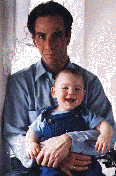 I'm 42 years old and will be teaching 5th grade at the Foxfire
school in Yonkers N.Y. My students this year will be the same
children I taught in 4th grade last year.
I am a 1996 graduate of Sarah Lawrence College. I returned to
school at the age of 35 after a career in sales.
My interests in MicroObservatory are in some ways simple. I
hope to be ableto show (not tell) my students what time is.
What distance is. What space is. And how these are connected.
I would also like to bring in personal history as it relates to the
stars. An example might be what were you doing
when the light from star x started on its way to earth.
I'm 42 years old and will be teaching 5th grade at the Foxfire
school in Yonkers N.Y. My students this year will be the same
children I taught in 4th grade last year.
I am a 1996 graduate of Sarah Lawrence College. I returned to
school at the age of 35 after a career in sales.
My interests in MicroObservatory are in some ways simple. I
hope to be ableto show (not tell) my students what time is.
What distance is. What space is. And how these are connected.
I would also like to bring in personal history as it relates to the
stars. An example might be what were you doing
when the light from star x started on its way to earth.
Bruce Mellin
bmellin503@aol.com
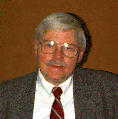
BS in Earth Science and Education - Northeastern University
MST in Earth Science - Boston College
Taught Junior High Earth Science for 21 years
Senior Lecturer - University College - Northeastern University
- Boston Mass.
Teach Astronomy and Earth Sciences (23 years)
Consultant to Evening Earth Science Program
- Northeastern University
Currently teaching Astronomy and Earth Sciences at the
Brooks School in North Andover Mass.
In 1989, I accepted a sabbatical position at the observatory
and became one of the early people to work on the
MicroObservatory Project. It has been amazing to watch
the hardware and software evolve over the past eight years.
No one could have guessed then that the internet would become
the interface to link the MO with the entire country.
Seven years ago when hired at Brooks, I was determined to
elevate the high school astronomy program into a true
lab-research science. Progress towards that goal has been
made with each passing year. This fall, the curriculum will
focus on image processing techniques and Voyager IIŠ sky models
that I hope will stimulate individual research projects on
comets, asteroids or the Moon.
My students will be testing an activity I recently wrote that
investigates comet velocity and dimensions. The activity will be
included on a CD of image processing activities to be published
by the Center for Image Processing at the University of Arizona.
Techniques acquired from the activity will be used by my student
to investigate any object orbiting in the solar system.
L. Robert Ochs (Rob)
robochs@aol.com
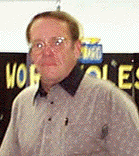 BS Degree from Ohio State University
(comprehensive science education);
MA Degree from the University of Connecticut (curriculum);
MA from the University of Rhode Island
(Library & Information Science).
Member of:
Astronomical Society of the Pacific;
The Planetary Society;
Astronomical Society of Greater Hartford;
Thames Astronomical Society;
National Science Teachers' Association;
American Museum of Natural History.
Attended launch of Hubble repair mission as a guest of NASA,
saw the 1991 solar eclipse from Hawaii (between clouds), have
reservations to fly to Aruba early next year for the solar eclipse
there (and wind surfing). Own four telescopes: Tele-vue Genesis
SDF renaissance edition; 10" Meade LX200; 8" Celestron SCT; 3"
Unitron refractor. Have 4DTV C-band satellite dish to watch
interesting events as they happen (like the current
Pathfinder to Mars mission). Use Netscape Navigator 3.0 Gold
to surf the various astronomical sites on the Internet, both at
home and in my classroom. Acquired a color LCD and T1 line to
the internet for use in my classroom.
BS Degree from Ohio State University
(comprehensive science education);
MA Degree from the University of Connecticut (curriculum);
MA from the University of Rhode Island
(Library & Information Science).
Member of:
Astronomical Society of the Pacific;
The Planetary Society;
Astronomical Society of Greater Hartford;
Thames Astronomical Society;
National Science Teachers' Association;
American Museum of Natural History.
Attended launch of Hubble repair mission as a guest of NASA,
saw the 1991 solar eclipse from Hawaii (between clouds), have
reservations to fly to Aruba early next year for the solar eclipse
there (and wind surfing). Own four telescopes: Tele-vue Genesis
SDF renaissance edition; 10" Meade LX200; 8" Celestron SCT; 3"
Unitron refractor. Have 4DTV C-band satellite dish to watch
interesting events as they happen (like the current
Pathfinder to Mars mission). Use Netscape Navigator 3.0 Gold
to surf the various astronomical sites on the Internet, both at
home and in my classroom. Acquired a color LCD and T1 line to
the internet for use in my classroom.
Michael Richard
mrichardxx@aol.com
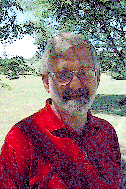 Michael Richard is the lead science teacher at Weymouth
High School, Weymouth, MA where he has taught earth science,
astronomy and geology, for the past twenty-six years. He holds an
MST from Boston College.
He has been a consulting teacher for a
number of NSF projects including Project IMAGE, Exploring the
Environment, Project Spectroscopy, Astronomy Village,
and Project STAR.
Currently, he is also teaching Earth Science Systems, a
new course he is developing. Earth Science Systems takes an
integrated approach to the study of our planet stressing global
investigations of its long and short term processes and changes.
ESS has no textbook in the traditional sense. The computer
connected to the Internet is used as an electronic textbook for
the students working in teams.
I plan to have student "research teams" use MicroObservatory
sporadically for a number of months in my Earth Science Systems
course. I want to give the students the experience of using a remote
telescope as a research tool. I would like to contribute to the
development of some MicroObservatory activities that require the
students, working in teams, to collect data (images) and then
perform some image processing on them in order to answer
a question or solve a problem. I am especially interested in
Moon related activities.
Michael Richard is the lead science teacher at Weymouth
High School, Weymouth, MA where he has taught earth science,
astronomy and geology, for the past twenty-six years. He holds an
MST from Boston College.
He has been a consulting teacher for a
number of NSF projects including Project IMAGE, Exploring the
Environment, Project Spectroscopy, Astronomy Village,
and Project STAR.
Currently, he is also teaching Earth Science Systems, a
new course he is developing. Earth Science Systems takes an
integrated approach to the study of our planet stressing global
investigations of its long and short term processes and changes.
ESS has no textbook in the traditional sense. The computer
connected to the Internet is used as an electronic textbook for
the students working in teams.
I plan to have student "research teams" use MicroObservatory
sporadically for a number of months in my Earth Science Systems
course. I want to give the students the experience of using a remote
telescope as a research tool. I would like to contribute to the
development of some MicroObservatory activities that require the
students, working in teams, to collect data (images) and then
perform some image processing on them in order to answer
a question or solve a problem. I am especially interested in
Moon related activities.
Cynthia Solomon
cynthia@media.mit.edu
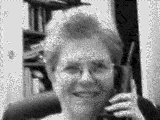 I am the Academic Technology Person for Milton Academy's
Lower School which includes grades K-6. I work with
children and teachers helping them to use
computers to enhance their own learning and teaching.
Children develop multimedia presentations in MicroWorlds,
a version of Logo, the programming environment that I helped
develop in the sixties and seventies. I also help teachers and
children use the web to gather information for their assorted
social studies and science projects.
I am not an astronomer, but I get very excited by the possibilities
that the Web and the MicroObservatory open up to kids
and to me for learning astronomy by doing astronomy.
I am the Academic Technology Person for Milton Academy's
Lower School which includes grades K-6. I work with
children and teachers helping them to use
computers to enhance their own learning and teaching.
Children develop multimedia presentations in MicroWorlds,
a version of Logo, the programming environment that I helped
develop in the sixties and seventies. I also help teachers and
children use the web to gather information for their assorted
social studies and science projects.
I am not an astronomer, but I get very excited by the possibilities
that the Web and the MicroObservatory open up to kids
and to me for learning astronomy by doing astronomy.
Larry Weatherwax
lwaxman@aol.com
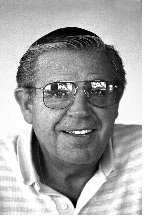 Mr. Weatherwax is the astronomy teacher and one
of the geology teachers at West High.
He has been teaching in the Anchorage School District
for 20 years beginning his teaching assignment for
the ASD at East High in 1977. His teaching assignments
have been varied over the years. At East Mr. W started out
teaching Biology and Algebra. He began teaching
astronomy in the school-within-a-school alternative
program at East in 1981. He also resurrected the geology
program in 1983 and continued these programs until his
transfer to West High in 1989. He has a BA in Biology
and Industrial Arts. from UNC, an MA in ecology fromUNC,
an MA in Marine Biology from Humboldt State College. and
an MA in Geology from Eastern Montana. He has studied
astronomy formally and informally for the past 15 years.
At West Mr. W. began in the astronomy and geology programs
in 1994. At this time there was no planetarium or internet
services at West. Astronomy was primarily a textbook course
with lots of films and some star parties when the weather
permitted.
With the construction of the new science wing, a
planetarium and internet stations changed the entire
outlook of astronomy at West. The course now has
several component features that these innovations enable.
Naked Eye Astronomy is enabled by the inclusion of the
planetarium. Deep space objects may actually be photographed
and researched by the students directly over the internet
through the Harvard Smithsonian MicroObservatory's five
online telescopes.
The geology program has also been enhanced by the
completion of the facilities in the new wing. The internet
has allowed us to associate with such programs as
the Princeton Earth Physics Project (PEPP).
Mr. Weatherwax was selected as one of the first secondary
instructors to be awarded a seismic station in his school.
He spent the summer of 1996 in training to incorporate these
concepts into the present geology program at West.
Mr. Weatherwax is the astronomy teacher and one
of the geology teachers at West High.
He has been teaching in the Anchorage School District
for 20 years beginning his teaching assignment for
the ASD at East High in 1977. His teaching assignments
have been varied over the years. At East Mr. W started out
teaching Biology and Algebra. He began teaching
astronomy in the school-within-a-school alternative
program at East in 1981. He also resurrected the geology
program in 1983 and continued these programs until his
transfer to West High in 1989. He has a BA in Biology
and Industrial Arts. from UNC, an MA in ecology fromUNC,
an MA in Marine Biology from Humboldt State College. and
an MA in Geology from Eastern Montana. He has studied
astronomy formally and informally for the past 15 years.
At West Mr. W. began in the astronomy and geology programs
in 1994. At this time there was no planetarium or internet
services at West. Astronomy was primarily a textbook course
with lots of films and some star parties when the weather
permitted.
With the construction of the new science wing, a
planetarium and internet stations changed the entire
outlook of astronomy at West. The course now has
several component features that these innovations enable.
Naked Eye Astronomy is enabled by the inclusion of the
planetarium. Deep space objects may actually be photographed
and researched by the students directly over the internet
through the Harvard Smithsonian MicroObservatory's five
online telescopes.
The geology program has also been enhanced by the
completion of the facilities in the new wing. The internet
has allowed us to associate with such programs as
the Princeton Earth Physics Project (PEPP).
Mr. Weatherwax was selected as one of the first secondary
instructors to be awarded a seismic station in his school.
He spent the summer of 1996 in training to incorporate these
concepts into the present geology program at West.
Workshop Home Page
| 





 BS in Earth Science and Education - Northeastern University MST in Earth Science - Boston College Taught Junior High Earth Science for 21 years Senior Lecturer - University College - Northeastern University - Boston Mass. Teach Astronomy and Earth Sciences (23 years) Consultant to Evening Earth Science Program - Northeastern University Currently teaching Astronomy and Earth Sciences at the Brooks School in North Andover Mass. In 1989, I accepted a sabbatical position at the observatory and became one of the early people to work on the MicroObservatory Project. It has been amazing to watch the hardware and software evolve over the past eight years. No one could have guessed then that the internet would become the interface to link the MO with the entire country. Seven years ago when hired at Brooks, I was determined to elevate the high school astronomy program into a true lab-research science. Progress towards that goal has been made with each passing year. This fall, the curriculum will focus on image processing techniques and Voyager IIŠ sky models that I hope will stimulate individual research projects on comets, asteroids or the Moon. My students will be testing an activity I recently wrote that investigates comet velocity and dimensions. The activity will be included on a CD of image processing activities to be published by the Center for Image Processing at the University of Arizona. Techniques acquired from the activity will be used by my student to investigate any object orbiting in the solar system.
BS in Earth Science and Education - Northeastern University MST in Earth Science - Boston College Taught Junior High Earth Science for 21 years Senior Lecturer - University College - Northeastern University - Boston Mass. Teach Astronomy and Earth Sciences (23 years) Consultant to Evening Earth Science Program - Northeastern University Currently teaching Astronomy and Earth Sciences at the Brooks School in North Andover Mass. In 1989, I accepted a sabbatical position at the observatory and became one of the early people to work on the MicroObservatory Project. It has been amazing to watch the hardware and software evolve over the past eight years. No one could have guessed then that the internet would become the interface to link the MO with the entire country. Seven years ago when hired at Brooks, I was determined to elevate the high school astronomy program into a true lab-research science. Progress towards that goal has been made with each passing year. This fall, the curriculum will focus on image processing techniques and Voyager IIŠ sky models that I hope will stimulate individual research projects on comets, asteroids or the Moon. My students will be testing an activity I recently wrote that investigates comet velocity and dimensions. The activity will be included on a CD of image processing activities to be published by the Center for Image Processing at the University of Arizona. Techniques acquired from the activity will be used by my student to investigate any object orbiting in the solar system.

 Workshop Home Page
Workshop Home Page